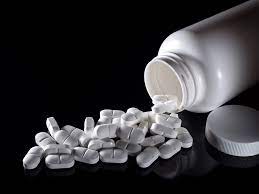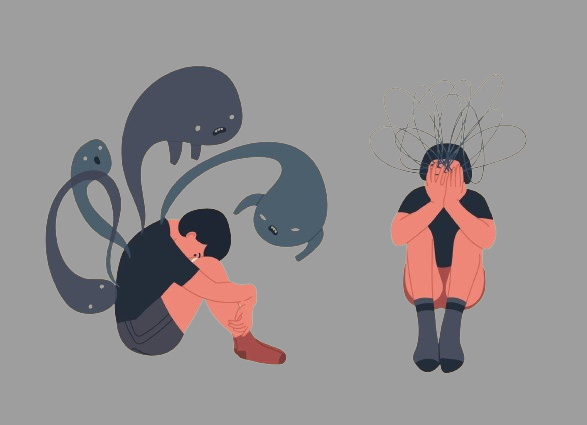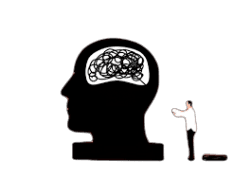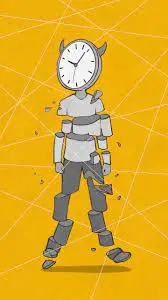Your life shouldn’t be dictated by the tragedy you’ve experienced, but PTSD makes it so. PTSD is among the many mental health issues that can be treated with BrainsWay’s non-invasive transcranial magnetic stimulation (TMS) technique. The therapy lessens the patients’ fear in the face of a potentially fatal circumstance, which frequently shows up as a propensity to steer clear of locations or activities that can trigger memories of the traumatic occurrence.
What is PTSD?
A mental health condition known as post-traumatic stress disorder (PTSD) is linked to modified stress response and reinforced learned fear behavior. It significantly impairs an individual’s ability to operate. It has been discovered that PTSD affects the default mode, executive control, and salience functional networks in the brain. The lateral PPC and dorsolateral prefrontal cortex (DLPFC) are parts of the executive control network.
The anterior cingulate cortex, anterior insula, and amygdala are part of the salience network. It has been discovered that in PTSD, there is more functional connection in the latter network. A method for treating post-traumatic stress disorder (PTSD) is called transcranial magnetic stimulation (TMS), which uses electromagnetic induction to stimulate particular brain regions.

According to recent research, high-frequency stimulation outperforms low-frequency stimulation in improving PTSD rating scales after treatment. The most frequent adverse effect is modest analgesic treatment for headache and scalp pain. Seizures are an uncommon side effect that are typically brought on by risk factors.
Research has been conducted to evaluate TMS’s overall effectiveness. However, the sample sizes were tiny and the results have been inconsistent. To determine if TMS is effective in treating PTSD, more studies with bigger sample sizes are needed. TMS is a rather safe treatment all around. The only FDA-approved treatment for resistant depression at the moment, but it may also be used to treat a variety of other illnesses.
Symptoms of PTSD
Although each person’s experience with PTSD is unique, common symptoms of the disorder that you may see improving include:
- intense flashbacks that seem to be reliving the horrible experience
- intrusive ideas and visuals
- Fears
- severe distress when the terrible incident is remembered, either literally or figuratively
- bodily experiences such discomfort, perspiration, queasy feeling, and shaking
- Overly vigilant or “hyper vigilance”
- issues with sleep
- Intolerance and hostile conduct
- Self-destructive habits, such abusing drugs or alcohol
- Apathy on an emotional level
Treatments for PTSD
Numerous psychotherapies and medications are used in the current treatment of PTSD, depending on the patient’s clinical presentation, level of cooperation, and severity.
Transcranial Magnetic Stimulation (TMS)
First launched in 1985, TMS is a noninvasive brain-stimulating technology (56). It has been employed as a therapeutic technique with growing promise and to assist in mapping the cortex with related functions (56, 57). The electromagnetic principles of Faraday are applied by TMS. A coiled circuit generates an electric current that passes across it. A magnetic field that is perpendicular to that current is thereby induced. In order to cause an electric current to flow through another electrically conductive substance, the magnetic field continues until it reaches it (57).

Essentially, a capacitor is connected to one or two copper coils to generate a variable electrical current that passes through the coils. The exact position of this coil on the scalp varies based on the type of treatment. A transient magnetic pulse is produced by the electric current.
The magnetic field travels through the scalp for about two centimeters before it reaches the neurons in the cortex, which are conductive material (57). The cortex’s axons are made to depolarize by an electrical stimulus. Because of the lower activation threshold, axons depolarize before neuronal cell bodies (58). Through neuronal subcortical connections and neurotransmitter release, this may result in localized alterations in the cortex or secondary and deeper regions (59, 60).
There are various TMS modalities. The most popular kind is repetitive magnetic transcranial stimulation (rTMS), which works by delivering a magnetic pulse on a regular basis and repeatedly (56, 61). Up to tens of pulses per second can be fired using rTMS (62).
Side effects of TMS
Headaches, neck pain, and local pain at the stimulation site are the most frequent side effects (65). It is believed that discomfort during treatment and the stimulation of superficial nerves are associated to pain. Increased blood flow from local scalp stimulation may be the cause of headaches (65). Seizures are the most often reported side effect, occurring in 0.1% to 0.6% of cases (57, 61). Severe adverse effects are infrequent.
Seizures are more likely to occur during high-frequency treatments and severe procedures. The threshold for seizures can be lowered by drugs and other neurological disorders (66). As a result, patients with a history of epilepsy should not use TMS, and those taking drugs that reduce seizure thresholds should reduce or cease using them altogether.
Any metallic implants or devices in close proximity to the coil are definite contraindications for TMS. When conductive materials are close to magnetic coils, they can cause eddy currents (67). TMS is therefore not recommended for those with cochlear implants. Unlike with electroconvulsive therapy, there is no indication of cognitive deterioration with TMS (68). TMS is a more recent therapy, and further study is required to get enough information on potential long-term side effects.
Neurobiology of TMS
TMS can induce motor responses, change memory, and alter executive function. It has several applications. Physiological explanations for these changes are being explored in ongoing research. Particularly with regard to memory formation and conspiratorial excitability, it has been noted that specific modalities and circumstances are linked to repeatable results (69).
The presence of neural network connections results in various downstream consequences and predictable alterations. It is best to employ specific neural network knowledge strategically. At the moment, TMS is mostly applied to the surface cortical areas. Since deeper brain structures are also impacted, if neural networks are better understood, they may be employed as a target for regulation (70).
High vs. Low Frequency Stimulation
Different settings and types of stimulation can have different effects on neuronal activity when using TMS. High vs. low frequency and intermittent vs. continuous burst firing are two of the most researched factors. Cortical excitability has been reported to diminish with low frequency stimulation and to increase with high frequency stimulation . This is caused by variations in cortical and sub-cortical activity in particular brain networks caused by a magnetic field passing through the head and skull . In addition, TMS frequency can be changed, as can application time, which directly affects synapse strength and memory formation. For instance, prolonged usage of low frequency stimulation can result in long-term depression (LTD).
Trauma-Based Psychotherapy
Trauma-focused therapy is the psychotherapy kind that has the strongest scientific backing when it comes to treating PTSD. “A variety of techniques most commonly involving exposure and/or cognitive restructuring (e.g., Prolonged Exposure, Cognitive Processing Therapy and Eye movement Desensitization and Reprocessing)” (43), are among the trauma-focused therapies for PTSD. In order to determine a patient’s level of stress response, patients are typically exposed to past traumatic events and scenarios. These experiences are then combined with coping techniques and acquired knowledge that can lessen PTSD symptoms and change the way people react to stress.
Medications

Pharmacotherapy is utilized to treat PTSD, and while many off-label medications are used in treatment, the FDA has only approved paroxetine and sertraline (46). Serotonin and nor epinephrine re uptake inhibitors (SNRIs) and selective serotonin reuptake inhibitors (SSRIs) are the first-line pharmacotherapy for post-traumatic stress disorder (PTSD). More precisely, paroxetine, sertraline, and venlafaxine were found to be more effective than placebo in treating PTSD symptoms in a meta-analysis of 37 randomized placebo-controlled trials (47).
Additionally, a post-hoc analysis reveals that sertraline or paroxetine were ineffective across several subgroups of trauma, whereas venlafaxine is helpful for both men and women across all sub types of trauma (48). Another drug that affects the serotonin pathway and may be used to treat PTSD is buspirone.



